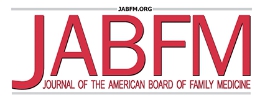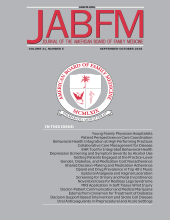Abstract
Background: Diagnosing type 2 diabetes mellitus (T2DM) in people with sickle cell disease (SCD) is complicated due to hemoglobin A variance in affected individuals. Accurate screening assessments are needed to prevent excessive morbidity and mortality. Primary care physicians need recommendations for screening and diagnosis in this unique population.
Purpose: To synthesize recommendations regarding medical diagnosis criteria for T2DM in SCD.
Data Sources: PubMed, Standards of Medical Care in Diabetes, US Preventative Services Task Force, National Institute of Diabetes and Digestive and Kidney Diseases, searched on December 28, 2022.
Study Selection: One reviewer searched each database to select applicable studies pertaining to “sickle cell disease,” “type 2 diabetes,” “HbA1c,” and “fructosamine” from December 28, 2022, to March 15, 2023.
Data Extraction and Quality Assessment: A comprehensive literature review was done to extract current data/facts and assess certainty of evidence.
Data Synthesis: This review reviews 5 articles that met inclusion criteria to outline outpatient screening and diagnosis of T2DM in SCD. Based on these findings, we recommend fasting plasma glucose as the standard screening starting at age 35 based on USPSTF guidelines. We do not recommend using HbA1c, fructosamine, or glycated albumin for screening or diagnosis of T2DM in individuals with SCD; the latter entities have limited implications in their use.
Limitations: There are limited studies available for diagnosis of T2DM in SCD.
Conclusions: Fasting plasma glucose is the standard screening for T2DM for SCD to ensure early diagnosis and prevent worsening macro and microvascular complications from both comorbid conditions.
- Endocrinology
- Family Medicine
- Fructosamine
- Hematology
- Internal Medicine
- Sickle Cell Disease
- Type 2 Diabetes
Introduction
Accurate testing for screening and diagnosis of type 2 diabetes mellitus (T2DM) among persons with hemoglobinopathies or hemoglobin variance is needed. For example, sickle cell disease (SCD) is an autosomal recessive hemoglobinopathy formed from a missense mutation on the sixth β-globin gene. This causes glutamic acid to be substituted for valine, resulting in an amino acid structure change, causing hemoglobin polymerization (physical sickling of red blood cells).1 Microand macrovascular complications from hemoglobin polymerization includes painful vaso-occlusion, chronic large-vessel vasculopathy, and ischemic organ damage1,2 and leads to increased morbidity and mortality in this population.1,2 Due to improved diagnosis in the United States through newborn screenings, use of disease modifying therapies (DMTs), and improvements in comprehensive care, survivorship into adulthood has significantly improved.2⇓⇓⇓⇓–7 With improved survivorship, however, there is now increasing need for effective and accurate health maintenance screenings for routine adult conditions in addition to specific SCD-screening for individuals with SCD.
Collaboration between SCD specialists and primary care is very important to ensure individuals with SCD receive appropriate non-SCD related screening assessments, specifically, the implementation of general health maintenance screenings for individuals for routine preventable disease progression are usually conducted in the primary care setting. One of the most common screening tests performed in adult primary care is for T2DM. T2DM screening is undertaken due to the risk of secondary complications, including coronary artery disease (CAD), peripheral vascular disease (PAD), retinopathy, nephropathy, and neuropathy. Early diagnosis and management of T2DM can significantly prevent these complications.8 More than 400 million individuals in the general population have T2DM and people with SCD are not immune to this comorbid condition. Recent studies have shown the prevalence of T2DM diagnoses increased from 15.7% to 16.5% in adults with SCD when matched with the general African American population in 2019.8
Individuals with SCD are at baseline risk of vascular complications which increase if they develop T2DM,9,10 as both conditions independently pose substantially increased risk for significant blood vessel and endothelial injury. Despite this known concern, there is no major consensus regarding screening, diagnosis, and appropriate monitoring of T2DM within the SCD population.
In the general population, physicians and practice providers use guideline-specified T2DM screening, which includes plasma fasting plasma glucose (FPG) >126 mg/dL and/or hemoglobin A1c (HbA1c) ≥ 6.5. The HbA1c uses an average glycosylation (fraction of hemoglobin with nonenzymatically bound glucose) of bound hemoglobin A located on the surface of red blood cells to determine estimated glycemic control over the past 3 months. However, HbA1c measurements cannot be used in individuals with SCD (and many other hemoglobinopathies) due to the lack of hemoglobin A or the abnormal formation of hemoglobin A (in the case of β-thalassemia). In addition to this issue, hemolysis and red cell turnover experienced by those with SCD impacts the degree of red blood cell glycosylation.11,12 Even in people with sickle cell trait (SCT) who may coinherit both HbA and HbS (1 gene), HbA1c testing may be inaccurate as it is not clear how the HbS affects the interpretation of the results. Similarly, other hemolytic anemia conditions which affect red cell turnover can decrease the accuracy of HbA1c (eg, Pyruvate kinase deficiency, hereditary elliptocytosis, etc). Thus, there is a need for further guidance regarding recommendations for screening and diagnosis of T2DM in individuals with hemoglobin and red cell abnormalities. Here we focus on the most common inherited, clinically relevant hemoglobin disorder in the United States, sickle cell disease SCD.
Methods
Data Sources and Searches
BC searched PubMed, Standards of Medical Care in Diabetes, US Preventative Services Task Force (USPSTF), National Institute of Diabetes and Digestive and Kidney Diseases (from December 28, 2022 to March 15, 2023). Our search language included “sickle cell disease,” “type 2 diabetes,” “HbA1c,” and “fructosamine.”
Study Selection
Peer reviewed literature and research studies was limited for our data collection. Thus, articles were selected via inclusion of the search language and applicable information to our research topic.
Data Extraction and Quality Assessment
BC extracted current data/facts and assessed level of evidence. Three reviewers (RK, JK, FO) evaluated the findings to ensure the data presented is consistent with both recent and previously published literature regarding subject matter.
Data Synthesis and Analysis
Results included synthesizing known guidelines and parameters with goal to create a systemic algorithm to aid in routine screening for T2DM in people with SCD. No additional data analysis was needed given the nature of this review.
Results
In this review, we identify specific learning points in establishing a diagnosis of and monitoring T2DM that are unique to comprehensive SCD care.
Outpatient Management
Current USPSTF guidelines recommend T2DM screening in asymptomatic adults aged 35 to 70 years old or earlier age if patients have identifiable risk factors for development of T2DM including family history, obesity, metabolic syndrome and hypercholesterolemia.13
HbA1c is the most commonly used screening tool for T2DM in primary care and is the recommended modality for screening and diagnosis by the International Expert committee in people without hemoglobinopathies.12,14,15 As previously introduced, HbA1c measurement is not valid in individuals with SCD. Despite prior research in the use of alternative methods for diagnosis of T2DM in individuals with sickle cell trait (SCT), there is no guideline or expert consensus on the screening and diagnosis of diabetes in individuals with sickle cell disease.
Here, we provide an algorithm based on this literature review and synthesis along with clinical experience with input from experts in the field on how to provide health maintenance and routine screening for T2DM in people with SCD. We recommend initial random plasma glucose monitoring at age ≥ 35 or earlier if risk factors present (BMI ≥ 25, CVD, hypertension as defined as 140/90 mmHg, HDL < 35 mg/dL or triglyceride level >250 mg/dL) based on the USPTF recommendations for higher risk individuals.13 If normal, repeat screening is recommended every 3 years; if prediabetes is identified, repeat screening is recommended annually.13⇓–15
Random plasma glucose (RPG) monitoring:
- If all RPG testing <140 mg/dL, no additional testing indicated
- If single RPG testing 140–199 mg/dL, recommend FPG testing
- If one RPG testing is ≥ 200 mg/dL, this is concerning for T2DM→ recommend repeat RPG and/or FPG
- If repeat RPG monitoring is >200 mg/dL and having symptoms of hyperglycemia (i.e. polyuria and polydipsia), this confirms diagnosis of T2DM
Fasting plasma glucose (FPG) monitoring:
- If < 100 mg/dL: Normal screening→ return to routine USPSTF other than use of HbA1c guidelines
- If 100-125 mg/dL, patient has pre-diabetes: recommend initiation of diet/lifestyle recommendations
- If ≥ 126 mg/dL, repeat FPG; if 2nd value is ≥ 126 mg/dL, this confirms diagnosis of T2DM
Alternative diagnostic options seen within our literature review include serum fructosamine and glycated albumin measurements, and 2-hour oral glucose tolerance test (GTT) values.15 Use of fructosamine and glycated albumin as nontraditional biomarkers for T2DM diagnosis and glycemic control has grown in popularity due to non-RBC protein glycosylation measurement in shorter time frame than HbA1c (∼14 days vs 3 months).15,17 After reviewing the American Diabetes Association’s Standards of Medical Care in Diabetes 2022, we do not recommend the use of fructosamine or glycated albumin for screening and diagnosis of T2DM despite its use in DM monitoring in people with SCD.15 Many factors can cause discrepancies in fructosamine and glycated albumin levels, including hypoalbuminemia less than 30g/L, hepatic, renal, and thyroid dysfunction.15–17 There is also limited evidence on the use of fructosamine and glycated albumin in measuring the long-term effects of uncontrolled T2DM complications.15–17 Although GTT can be used with FPG when HbA1c discordance is present, falsely elevated glucose levels can be present with fasting and decreased carbohydrate loading before testing (ie, difficulty with consuming 150g carbohydrate load 3 days before testing or carbohydrate restriction). Thus, we do not recommend GTT due to testing difficulty of the test and this should be considered when selecting this testing modality.15 Although continuous glucose monitoring (CGM) is not currently recommended for screening for or diagnosis of diabetes, we anticipate that this tool may play a future role in glycemic control, as it is not easily influenced by red cell disorders, such as hemoglobinopathies, anemias, etc., like HbA1c assays. As research within this testing modality is evaluated for efficacy of screening and/or diagnosis, it is likely to become an important added option for those in whom HbA1c testing is not reliable.
Based on the above discussion, we recommend the use of fasting plasma glucose as the standard screening for T2DM for SCD starting at age 35 if there are no identifiable risk factors or earlier if identifiable risk factors are present. If FPG are less than 100 mg/dL, we recommend repeat screening every 3 years. If FPG levels are between 100 to 125 mg/dL, we suggest repeat screening testing annually. If FPG levels are ≥ 126 mg/dL, we recommend repeat FPG testing to confirm diagnosis of T2DM.
Discussion
SCD is an inherited blood disorder that results in significant micro- and macrovascular complications due to the endothelial adhesion and inflammation. In high resource countries, with the use of early screenings and DMTs, more than 95% of children with SCD are surviving into adulthood. As more individuals with SCD are now adults, we need to ensure these adults receive routine, comprehensive preventative care in addition to SCD-specific screening. Understanding accurate tools for screening and diagnosis of T2DM is important to ensure early diagnosis in those with SCD to prevent worsening complications from both comorbid conditions. Based on this literature review and clinical experience, we recommend the use of FPG starting at age 35 given its accuracy in the setting of hemoglobin variance seen in various hemoglobinopathies. We do not recommend using HbA1c for screening, diagnosis, or monitoring progression of T2DM in individuals with SCD. Alternative screening methods, such as fructosamine and glycated albumin, have limited implications in their use due to various factors and do not predict long-term outcomes in T2DM. Further study is needed in the field of diabetes to improve diagnosis and monitoring for individuals with sickle cell disease. With currently available measures, we currently use FPG and recommend this testing modality to PCPs caring for individuals with SCD until further data can drive more precise monitoring.
Notes
This article was externally peer reviewed.
Conflict of interest: None.
Funding: None.
To see this article online, please go to: http://jabfm.org/content/37/5/919.full.
- Received for publication January 30, 2024.
- Revision received March 19, 2024.
- Accepted for publication March 25, 2024.






